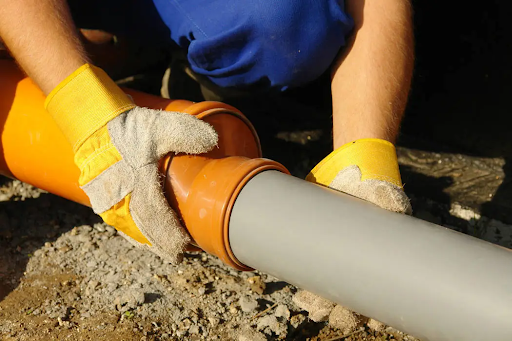Maintaining a functional plumbing system is essential for the comfort and safety of your home. When faced with damaged or deteriorating pipes, deciding between pipe replacement and relining can be challenging. In this article, we will explore these two options and discuss why pipe relining may often be the superior choice for your plumbing needs.
Pipe Replacement: The Conventional Approach
What is Pipe Replacement?
Pipe replacement is a traditional method that involves removing the old, damaged pipes entirely and replacing them with new ones. This process can be intrusive, costly, and time-consuming, making it less attractive to homeowners.
Advantages of Pipe Replacement
- Durability: New pipes guarantee a longer lifespan.
- Improved Flow: Replacing old, corroded pipes can significantly enhance water flow and pressure.
- Versatility: Allows for the installation of pipes made from different materials, such as copper or PVC.
Drawbacks of Pipe Replacement
- Cost: Pipe replacement is generally more expensive due to materials and labor.
- Disruption: It can cause extensive disruption to your property, including excavation work and potential damage to landscaping or structures.
Pipe Relining: A Modern and Efficient Alternative
What is Pipe Relining?
Pipe relining, also known as trenchless pipe repair, is a contemporary and minimally invasive method for repairing damaged pipes. It involves inserting a liner coated with epoxy resin into the existing pipe, creating a new, seamless inner surface that effectively repairs cracks, leaks, and other issues.
Advantages of Pipe Relining
- Cost-Effective: Pipe relining is often more budget-friendly as it requires less labor and excavation work.
- Minimal Disruption: It is less intrusive and doesn’t require extensive digging, preserving your property’s aesthetics.
- Speed: The process is quicker compared to traditional pipe replacement.
Drawbacks of Pipe Relining:
- Limited Application: Pipe relining may not be suitable for severely damaged or collapsed pipes.
- Lifespan: While relined pipes can last for several decades, they may not be as durable as entirely new pipes.
Why Pipe Relining is Often the Best Option
- Cost-Efficiency: One of the most significant advantages of pipe relining is its cost-effectiveness. Homeowners can save a substantial amount compared to traditional pipe replacement, as there is less labor and minimal disruption involved.
- Minimal Disruption: Pipe relining is a less intrusive process, preserving your property’s aesthetics and minimizing the inconvenience caused by extensive excavation.
- Speedy Resolution: For those seeking quick repairs, pipe relining is the go-to option. It allows you to address plumbing issues promptly, restoring the functionality of your system without unnecessary delays.
- Environmentally Friendly: Pipe relining generates less waste and is considered a more environmentally friendly option compared to the disposal of old pipes during replacement.
Conclusion
While both pipe replacement and pipe relining have their merits, pipe relining often emerges as the superior choice for most plumbing repair situations. Its cost-efficiency, minimal disruption, speed, and environmental benefits make it an attractive option for homeowners looking to address plumbing issues effectively. However, it’s crucial to consult with a professional plumber to evaluate your specific plumbing needs and determine the most suitable solution. Ultimately, choosing pipe relining can be a smart and practical investment in the long-term health and functionality of your plumbing system and your home.
You may also like
-
The Silent Battle Beneath: Understanding the World of Wormfare
-
Unveiling the White CBG Strain: Characteristics, Potency, and Therapeutic Benefits
-
Why Choose Growers Choice Seeds for Buying Marijuana Seeds
-
What type of clothes wear in Qatar Business class?
-
Obtained Review – Get What Your Business Needs to Fuel Expansion

